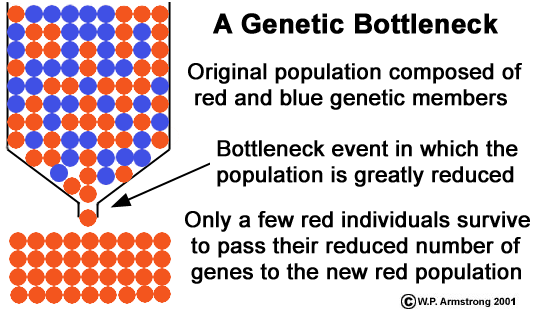Horsing Around with Cloning - Przewalski's Edition
- Bailey Tuddenham

- Mar 19, 2023
- 4 min read

I wanted to look into a way that technology is currently benefiting endangered species, and one of the insights that my ex-manager at Banham Zoo, Asim, gave me was into the cloning of the Przewalski's horse. This was something that was particularly interesting to me, and so I wanted to explore it further. I will first note my research, and then give my personal viewpoint and opinion on what I have researched.
The Przewalski's horse is a species of horse that is native to central Asia. It is considered to be the only "true wild horse" species that still exists today. They are named after the Russian explorer Nikolay Przhevalsky, who first documented them in the late 19th century. However, the Przewalski's horse is believed to have been present in central Asia for thousands of years before this.

Due to habitat loss, hunting, and competition with domestic livestock, their numbers declined dramatically throughout the 20th century. By the 1960s, it was believed that the species had gone extinct in the wild.
Fortunately, a small number of Przewalski's horses had been captured and kept in zoos and breeding programs around the world. Due to the zoos, the captive population was able to regrow, and efforts were made to reintroduce the species to the wild. In the 1990s, a number of Przewalski's horses were reintroduced to Mongolia, where they have since been thriving in their natural habitat.

Despite this success, the Przewalski's horse still remains a critically endangered species. There are believed to only be around 2,000 left in the world; all of which are descended from the very small number of captive-bred horses from zoos. This lack of genetic diversity poses a massive threat to their long-term survival. In order to try and conserve the species, scientists have been exploring the possibility of cloning Przewalski's horses.
In the 1980s, scientists at the San Diego Zoo Wildlife Alliance noticed what was going to happen to the Przewalski's horse and began preparing for the future by cryopreserving (freezing) living cells from over a dozen Przewalski's horses.

In 2020, the San Diego Zoo Wildlife Alliance announced that they had successfully cloned a Przewalski's horse for the first time. The cloned foal, named Kurt, was born on the 6th August, 2020. He's very cute.
The cloning of Przewalski's horses is seen as a potential tool for increasing the genetic diversity of the species and aiding in its conservation efforts. By using the cells from horses from the 1980s, they're able to reintroduce genes that have been lost over the past 40 years, and thus reintroduce more genetic diversity back into the species. This is an absolute game changer for the species, and could be a great starting point in increasing genetic diversity before reintroducing them back to the wild to breed naturally.

However, some conservationists argue that cloning is a distraction from other, more effective conservation measures, such as habitat protection. Others worry that the cloning of Przewalski's horses could lead to unintended consequences, such as the spread of genetic diseases or the creation of a subspecies that is less adapted to its environment.
My Thoughts
Firstly, well done to those scientists who were forward-thinking enough to freeze Przewalski's horse cells in the 80s. Their vision has allowed us to even be discussing this in the first place.
I personally think that the idea of using cloning to help reintroduce genetic diversity to the Przewalski's horse is a fantastic idea. There are many species that are dying out due to bottlenecking (where genetic diversity is reduced and the animals develop health issues across each next generation). If we can successfully prove that cloning can help the Przewalski's horse, it opens the door for aiding conservation efforts of a huge number of other animals. The only issue lies in whether any past genetic material was stored for other species; we are lucky in the case of the Przewalski's horse that scientists thought to freeze cells all those years ago.

To a degree, I understand the concerns that some people have. Of course, habitat protection and development should be a priority when trying to conserve a species. However, in the case of the Przewalski's horse, the habitat isn't the biggest issue they're facing. The biggest issue is coming from the bottlenecking and thus lack of genetic diversity, and so the use of technology, such as cloning, is going to have a much bigger impact than developing their habitat. Even with a perfect habitat, the Przewalski's horse is not going to thrive. However, the concern of a subspecies developing that isn't well adapted to the current environments in the wild is a relatively fair one, and that would require much more habitat development than what is taking place right now. But, I do find it hard to imagine that a poorly-adapted Przewalski's horse "spin-off" would happen, given the nature of cloning and the ability to micro-manage genetics to almost design the animal to be well adapted to its environment.
The concern that I do understand more, however, is the worry that things such as mutations could take place which could then spread across the whole population, if released back into the wild. I think that cloned animals should be monitored in controlled, zoo environments first before introducing them to the wild, in order to see whether any side effects take place over time.
The successful cloning of a Przewalski's horse represents an important milestone in conservation and technology. As efforts continue to protect and restore its natural habitat, I think that cloning as a tool for increasing genetic diversity and aiding in its survival should definitely continue to be explored.

Read More:
Ryder, O. (1988). Przewalski's horse — putting the wild horse back in the wild. Oryx,22(3), 154-157






